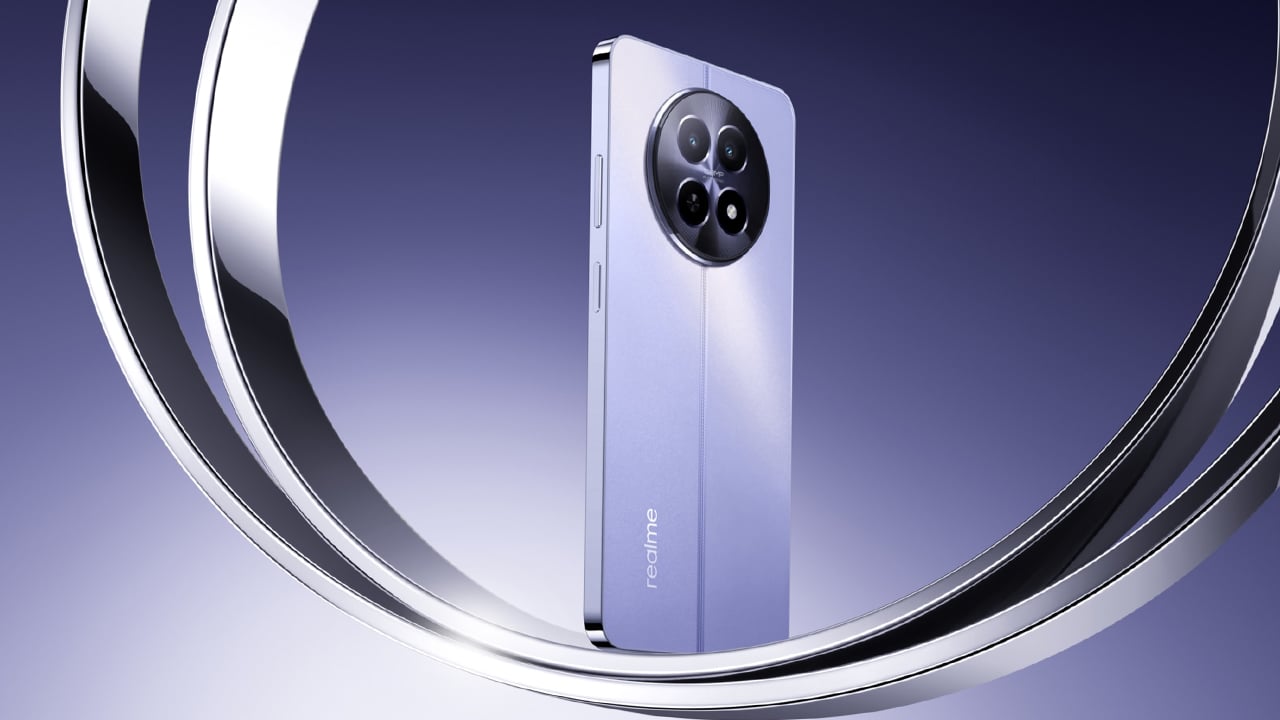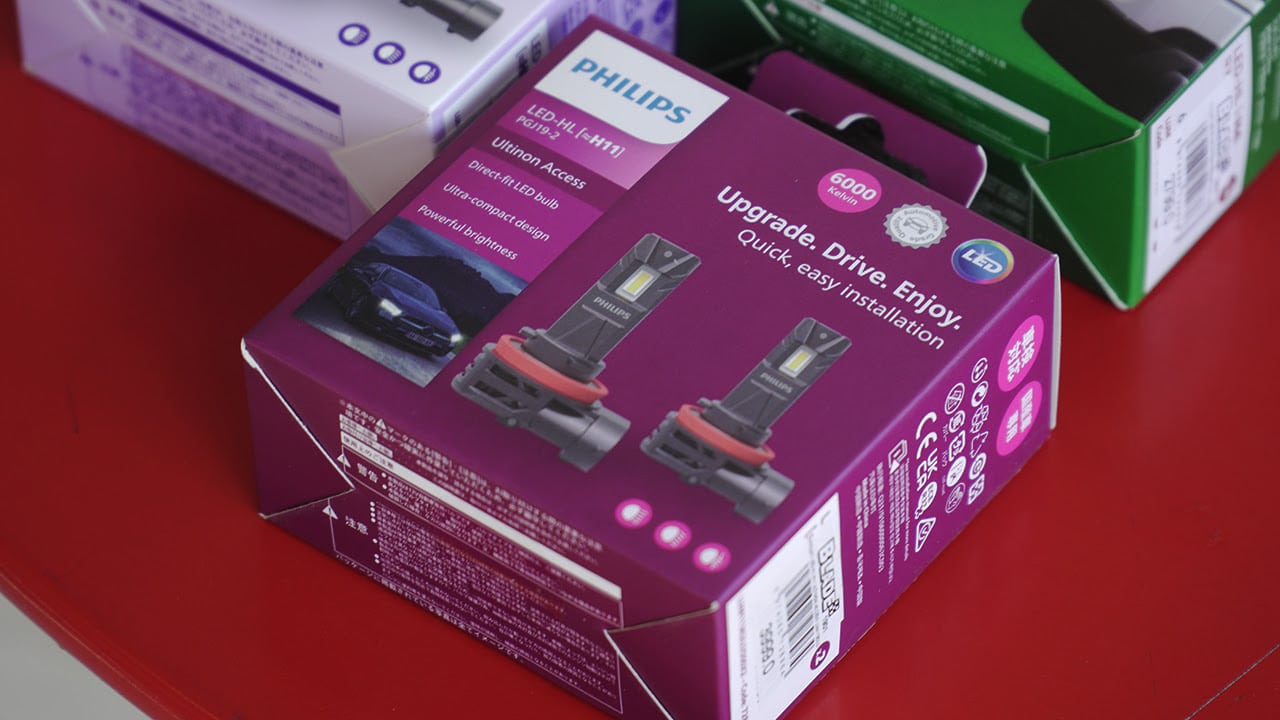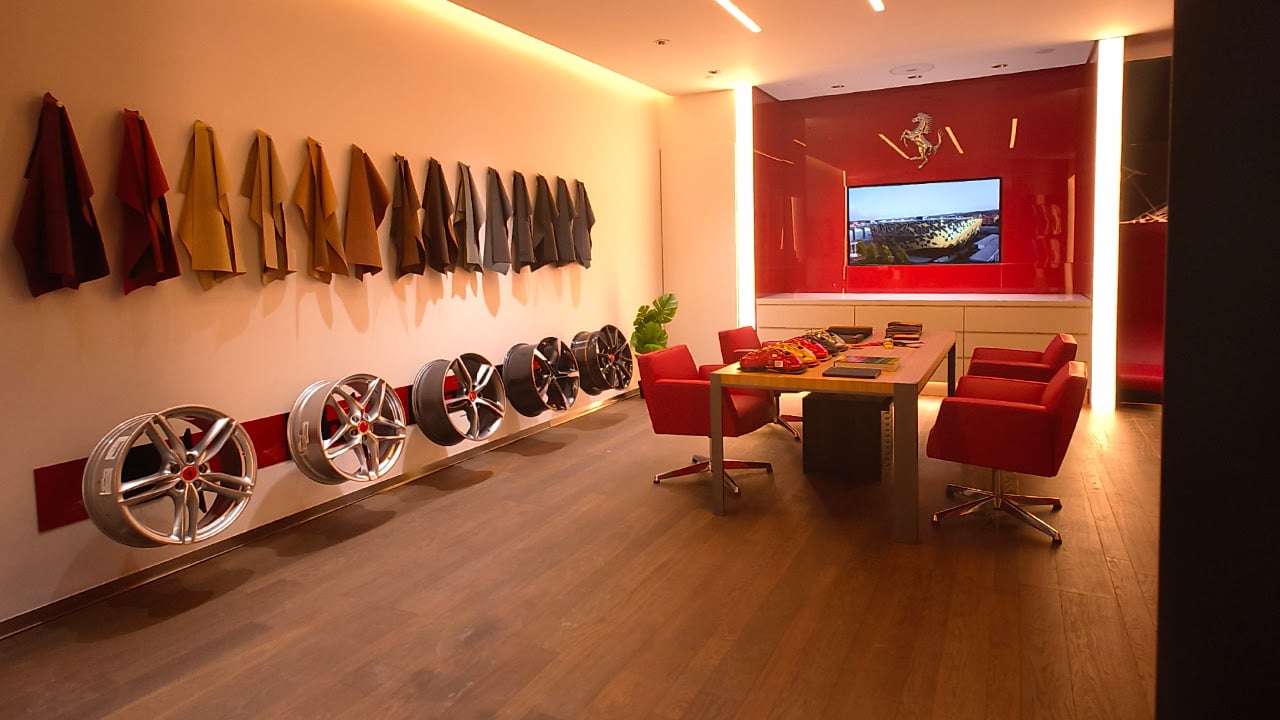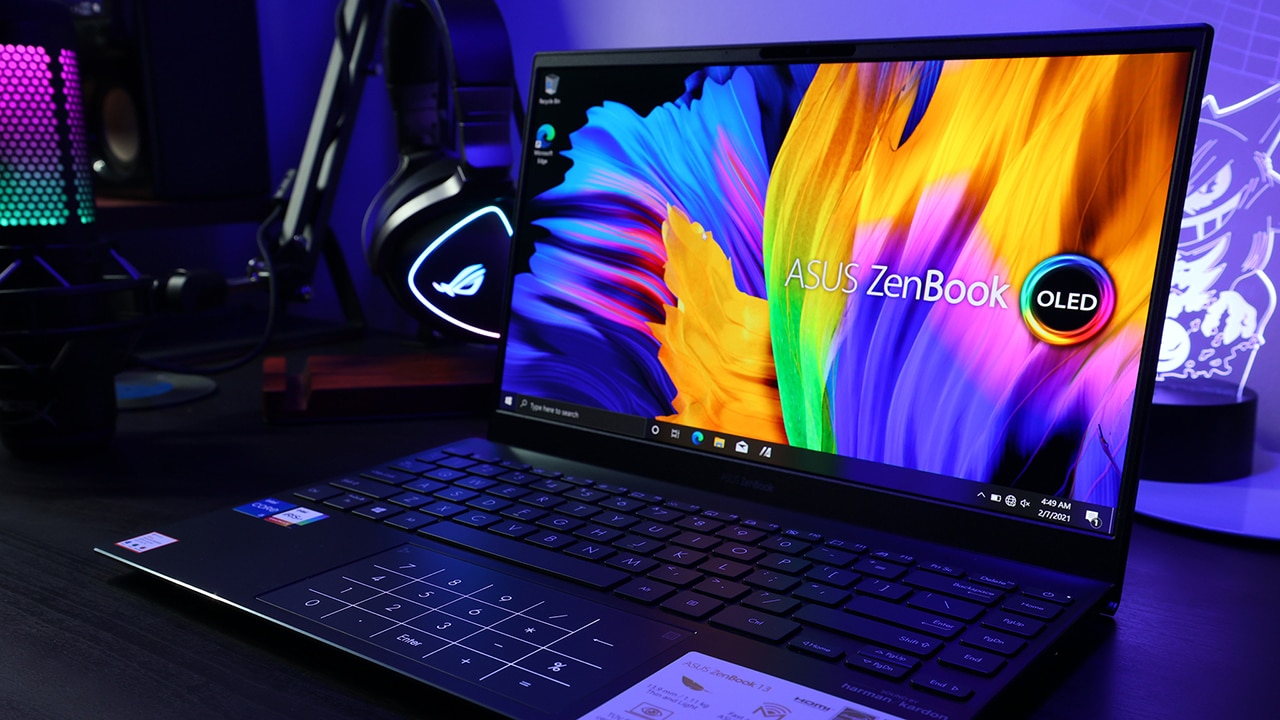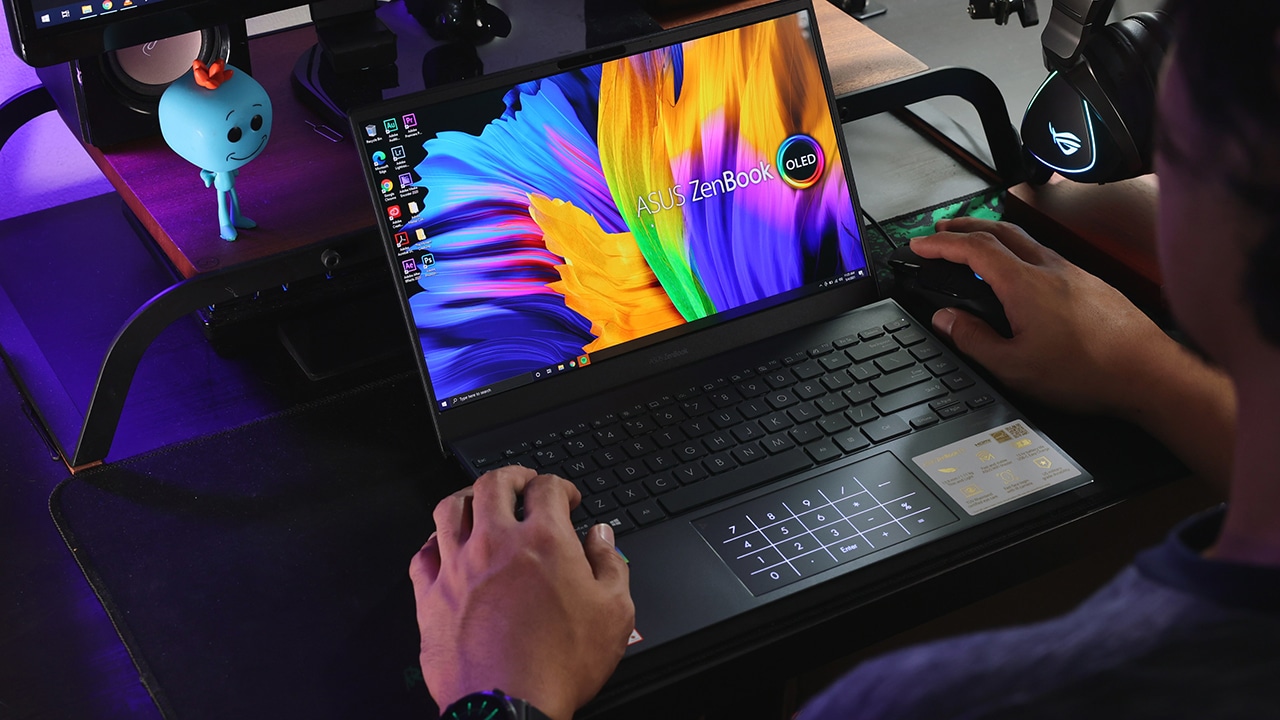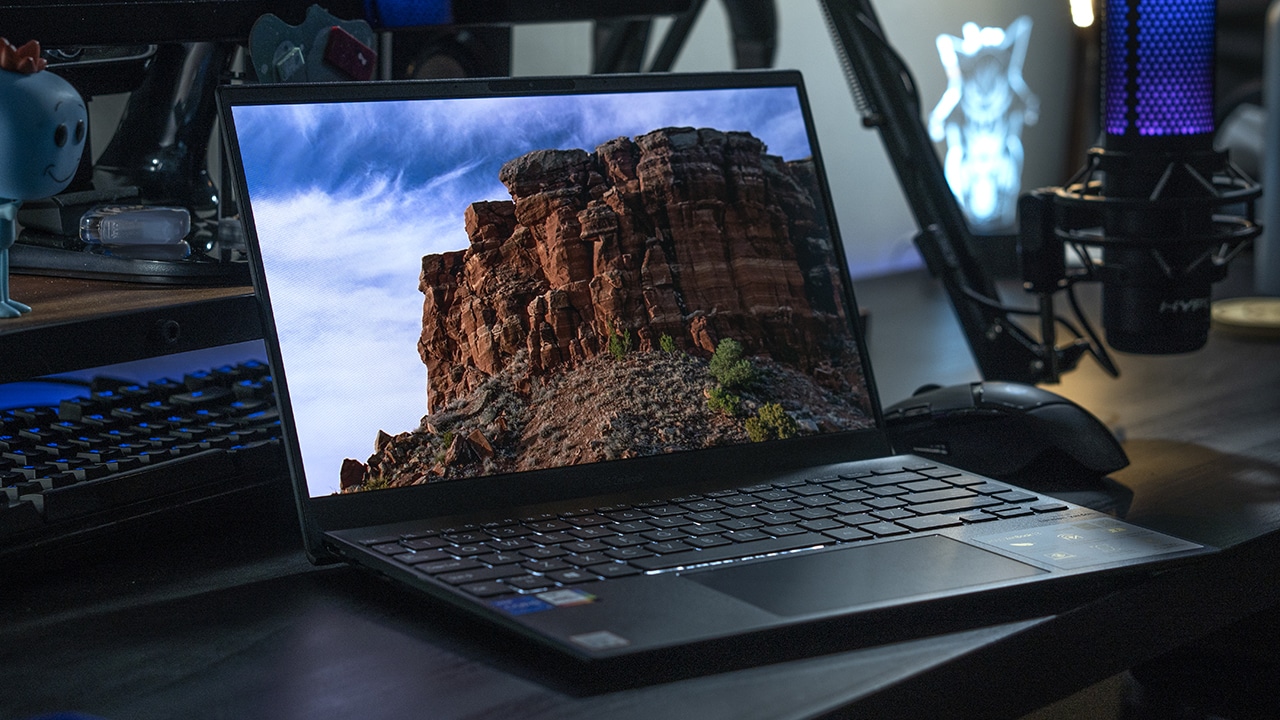Televisions have indeed come a long way from those CRT models with bulky bodies. And from flat-screen displays, Samsung took things up a notch further with its The Frame series of televisions that also double as pieces of art.
It clearly boasts a unique design and features to attempt and to marry both art and technology in one package. How do these fare? We find out.
Design
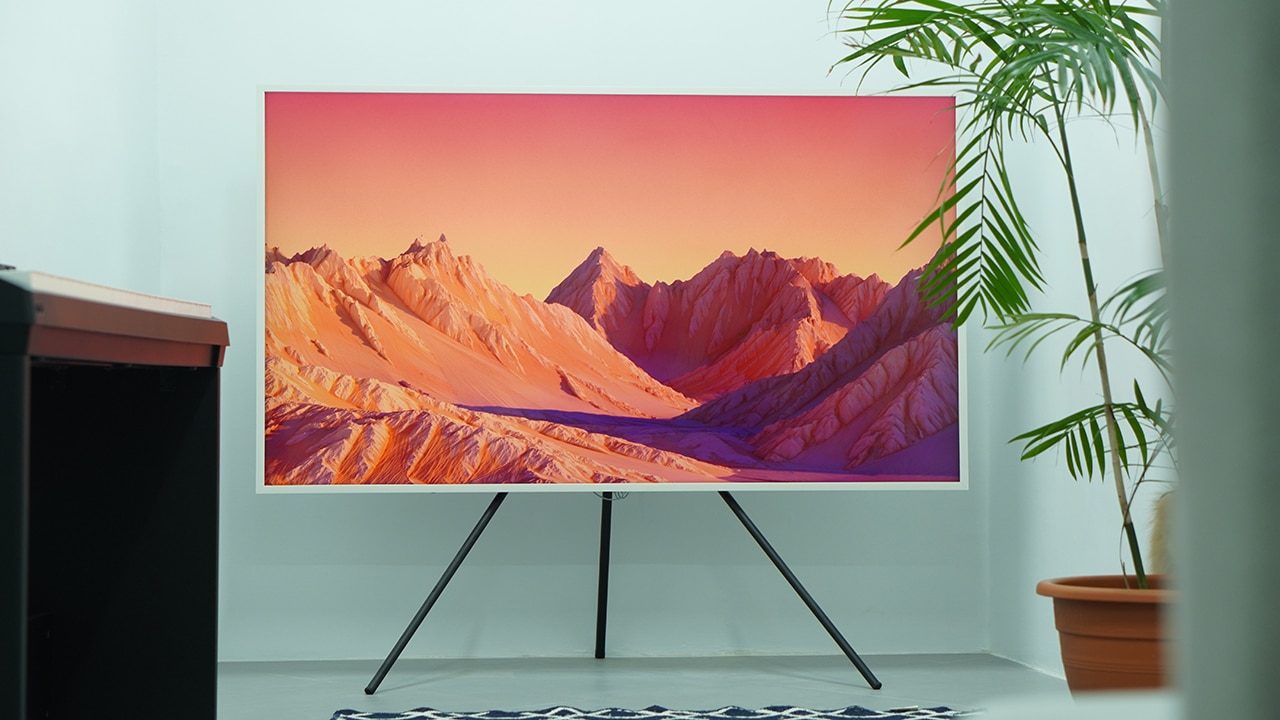
There’s a lot to talk about with The Frame’s look. It is, after all, crafted with a design-first approach. Offering a handful of thoughtful design features, The Frame isn’t just a TV you put in a room but an art piece worth looking at and talking about.
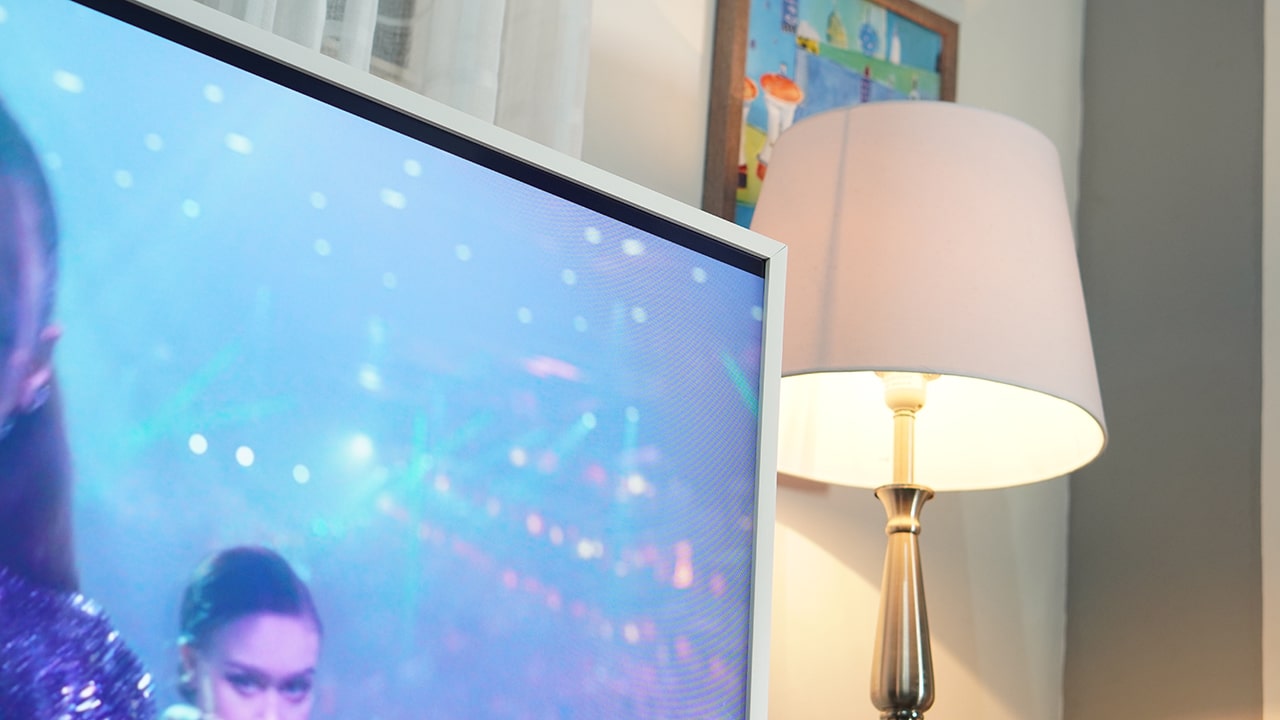
One of its most prominent offerings is the magnetic, customizable bezels. Samsung does away with the conventional design of TVs and gives users a choice on how they want their TV to look like. There are four colors to choose from namely white, brown, beige and black.
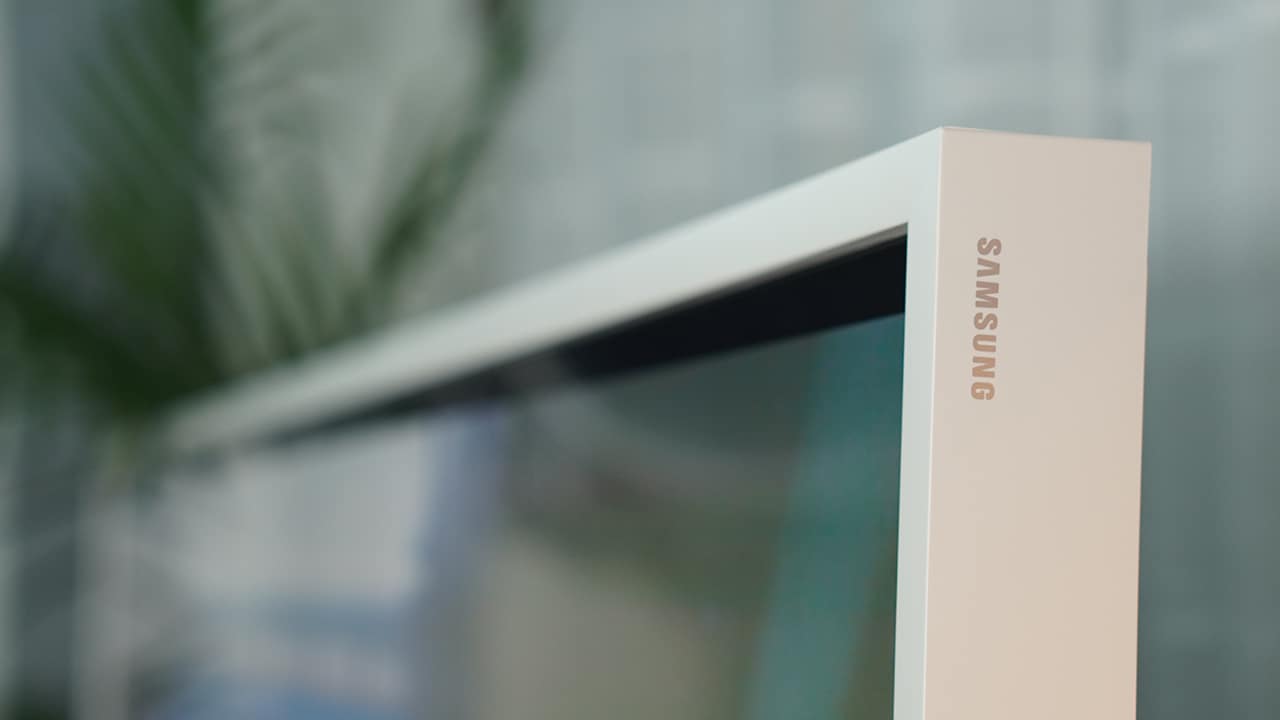
Samsung’s decision to go for neutral colours is a great decision since its easier to fit in most color schemes. Additionally, the bezels easily attach and detach using magnets so if you ever feel like switching out colors, it’s really easy to do so.
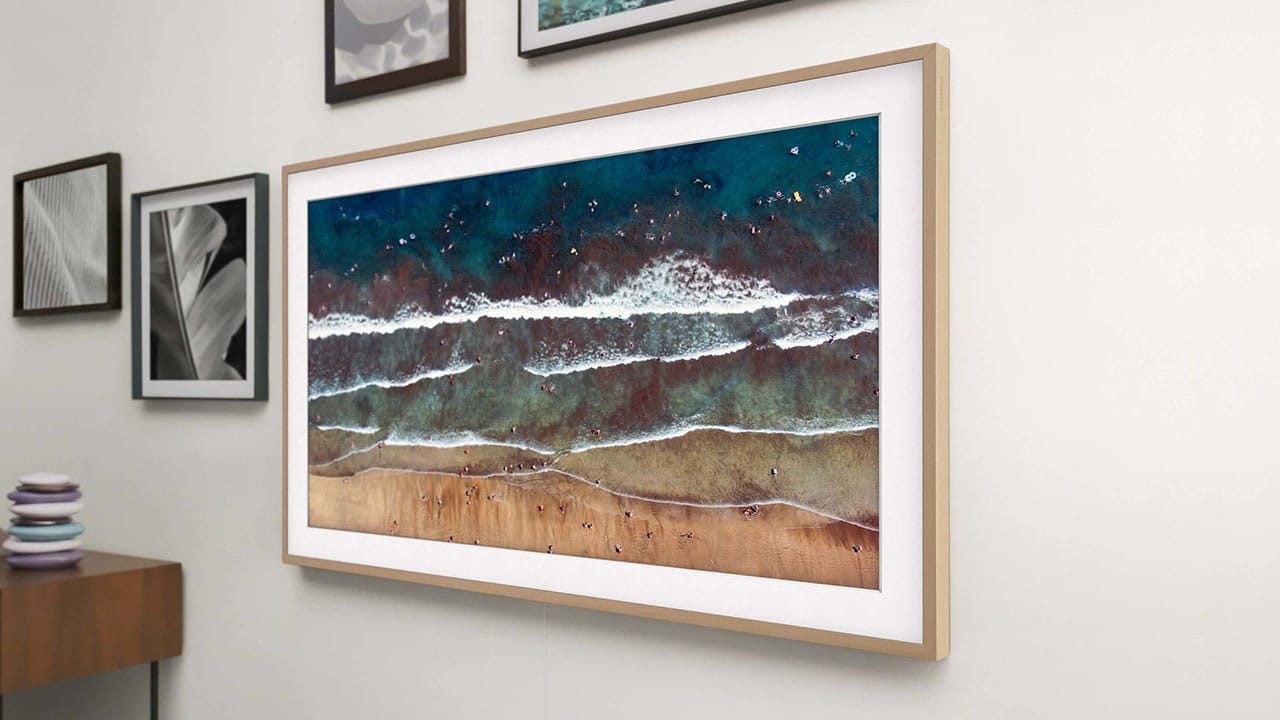
To mimic the look of an actual photo or art frame, the device can be mounted flush against the wall meaning it lays flat with no gaps unlike a regular TV. One downside of this, however, is that the TV will be unable to swivel so users who need more flexibility in their viewing angles may not find this appealing.

Additionally, Samsung also provides a regular stand inside the box or an optional Studio Stand as an unmounted option. Keeping true to its art-first mentality, the Studio Stand is made to look like an easel so when you prop The Frame up, it looks like a beautifully framed piece of art.
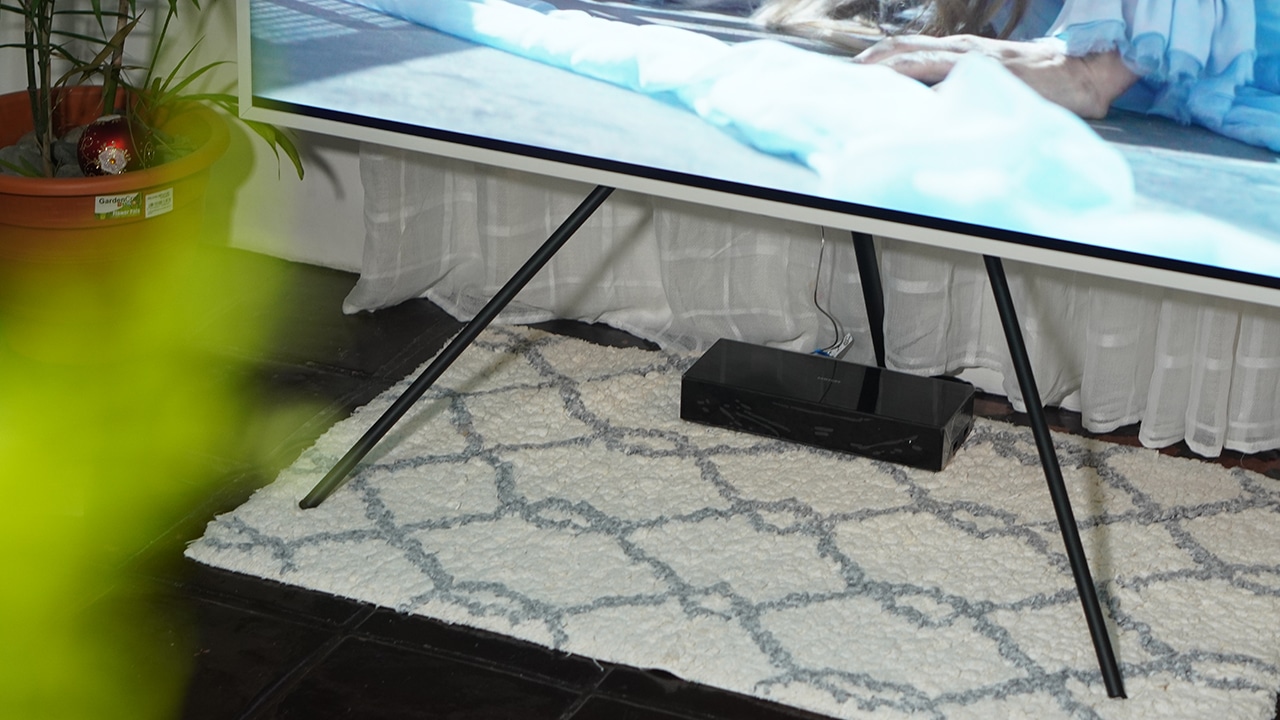
One of the things that can easily ruin a setup is wires. They can be very unsightly and can easily make things look cluttered or out of place. The Frame is able to minimize its wires by using what Samsung calls the One Invisible Connection. Instead of having the HDMI, USB, and other connectivity ports at the back of the TV like most, The Frame connects to the included One Connect Box instead.
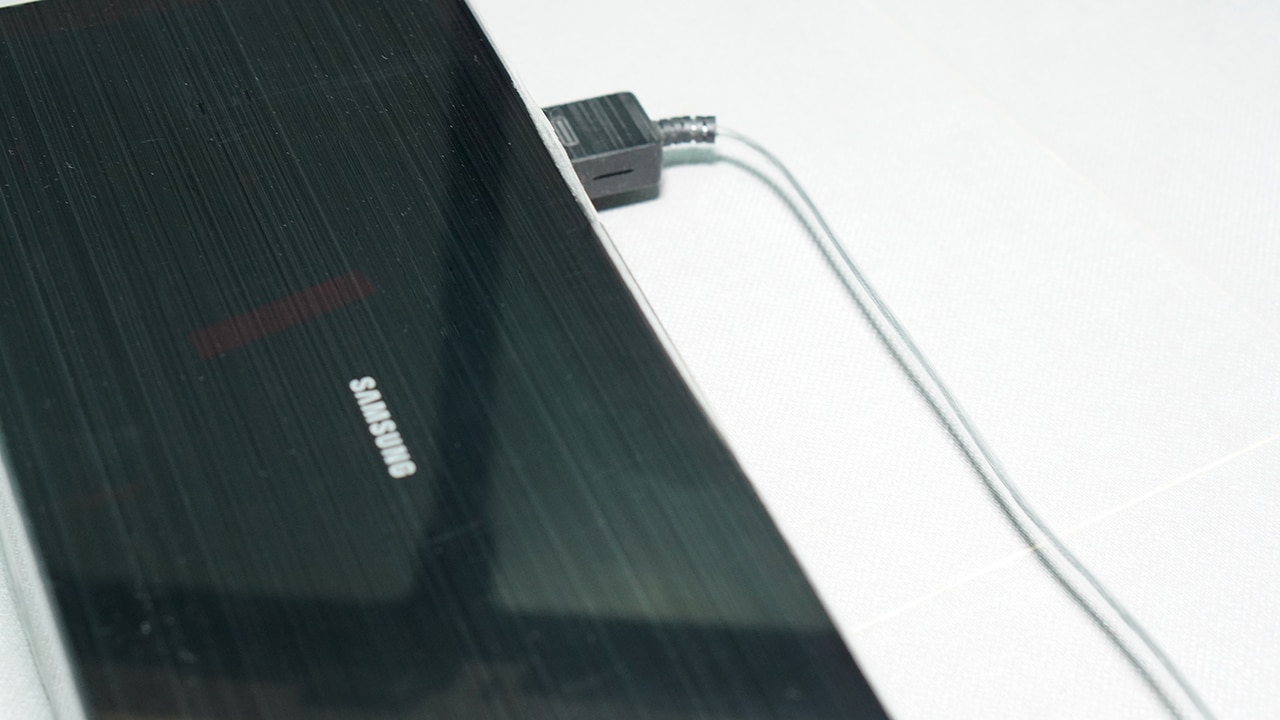
This device houses all of the connectivity ports and can be stored separately from the TV. The only wire you’ll find on The Frame is a single almost invisible cable that connects to the One Connect Box so whether it’s mounted or on the Studio Stand, it’s barely seen. It’s really quite impressive how Samsung was able to create a system where the device need only a single cable to connect to different types of ports so props to that!
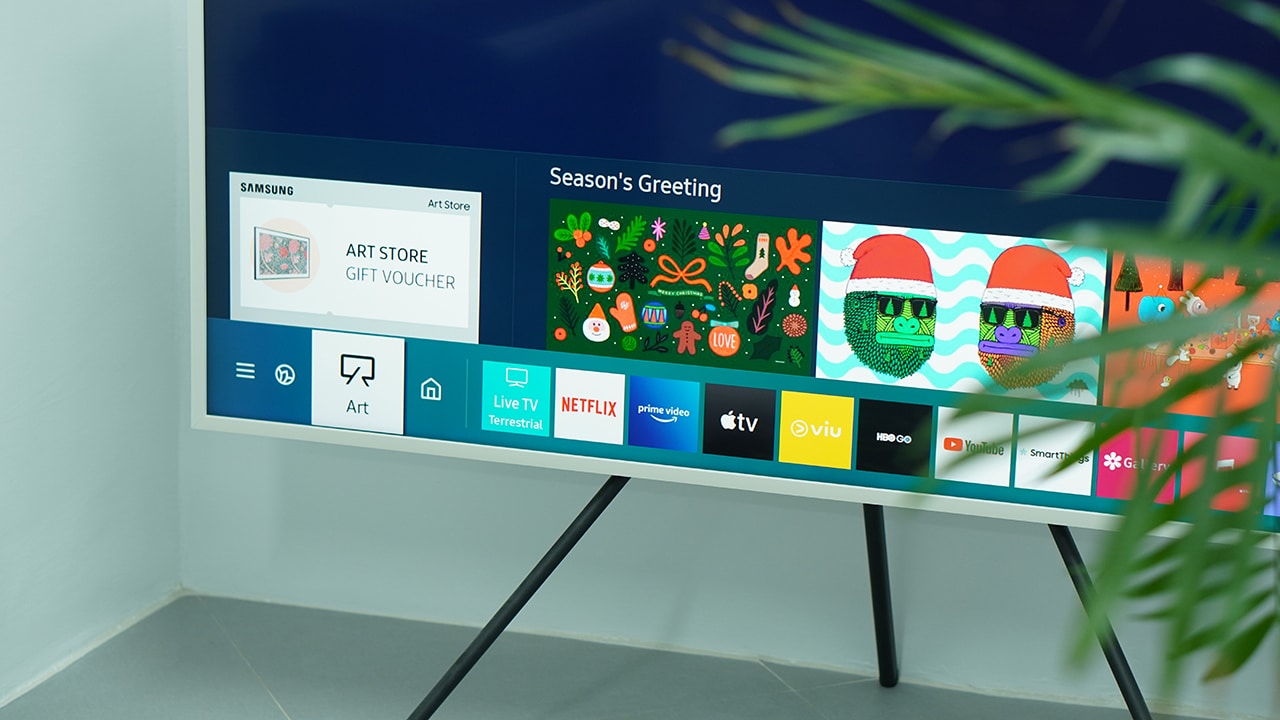
We found this to be a very useful feature not just because it makes it a lot easier to hide wires but also because it also makes it easier to plug in all sorts of things. Whether it’s a flash drive or HDMI cable, we were really happy not having to stick our arm behind the TV and blindly look for the port we need.
The Frame and its design really shines when the device is put into Art Mode but let’s talk about that later on.
Picture quality and performance

The Frame comes in three sizes — 32 inches, 55 inches, and 65 inches for its largest. All sizes now support Samsung’s Quantum Dot LED or QLED technology which promises brighter, more vibrant images compared to OLED panels. True to its word, The Frame really does churn out impressive picture quality with rich saturation balanced by just the right amount of contrast.
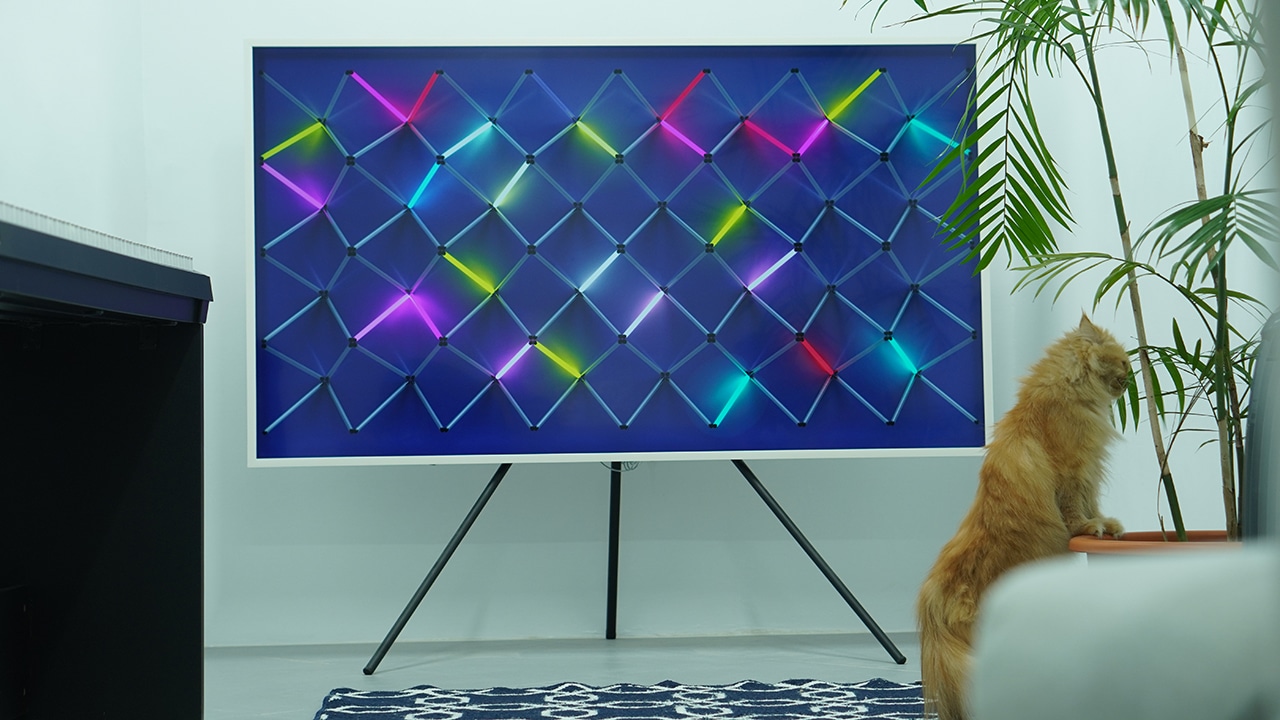
The screen isn’t glossy at all and we didn’t experience any glare when watching. Image sharpness is also very notable and overall movement in most scenarios are really smooth.
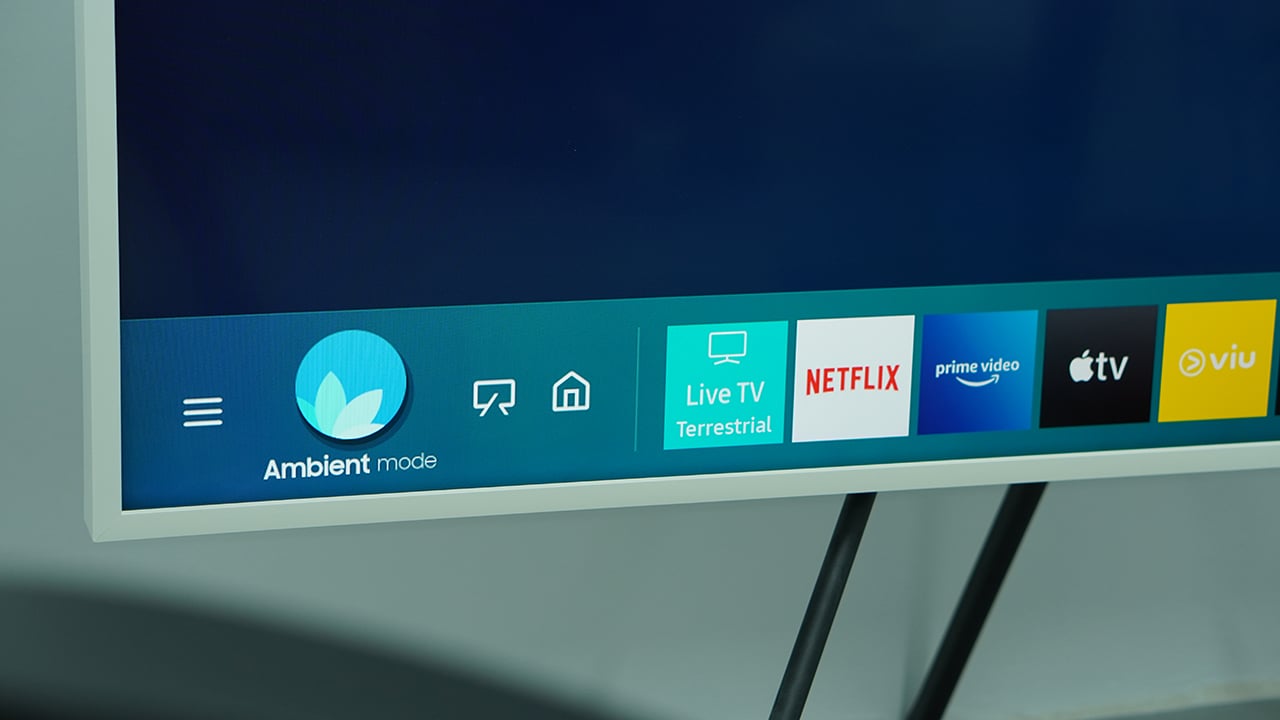
The Frame offers multiple modes to suit all kinds of content. The device does support standard dynamic range but you’ll want to opt for high-dynamic-range or HDR when you can. In this mode, colors really stand out and watching becomes much more immersive.
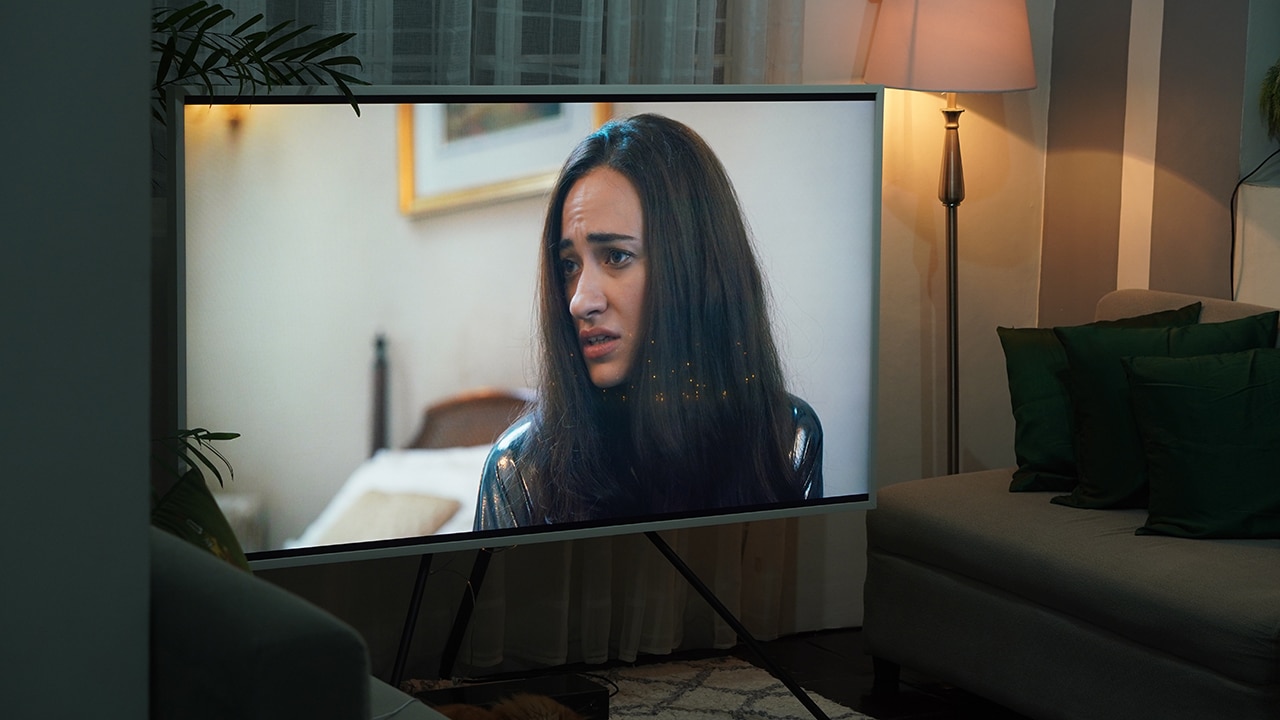
Being film enthusiasts, we also found ourselves loving The Frame’s Filmmaker mode. With this feature enabled, the device does away with digital enhancements and, instead, preserves the look, colors, and movement of the movie so it’s shown the way the filmmakers intended it to be seen.
We also hooked up our PlayStation 4 to see how The Frame would handle gaming. Unsurprisingly, HDR and its Game Mode noticeably enhanced the overall viewing experience. We enjoyed consistently smooth gameplay with barely any instances of lag or stutter. We can only imagine how current-gen consoles like the Xbox Series X would fare but we’re sure it would look pretty amazing.

Needless to say, picture quality on The Frame is nothing short of impressive. The only thing we found lacking was its limited viewing angles. Upfront, you get great images but if you’re stuck watching from an angle where the TV is skewed, you won’t get the same experience. This is most likely due to the fact that it’s also meant to be appreciated like a painting that you’re standing directly in front of.
As for audio, there’s nothing too exceptional to mention. The Frame is loud enough to fill up a small- to medium-sized room and is clear enough for the most part of our experience.
Of course, if you’re rather particular about audio, it’s still best to attach a separate system. Luckily, doing so won’t ruin The Frame’s aesthetic as you can use the One Connect Box to organize your cables away from the TV.
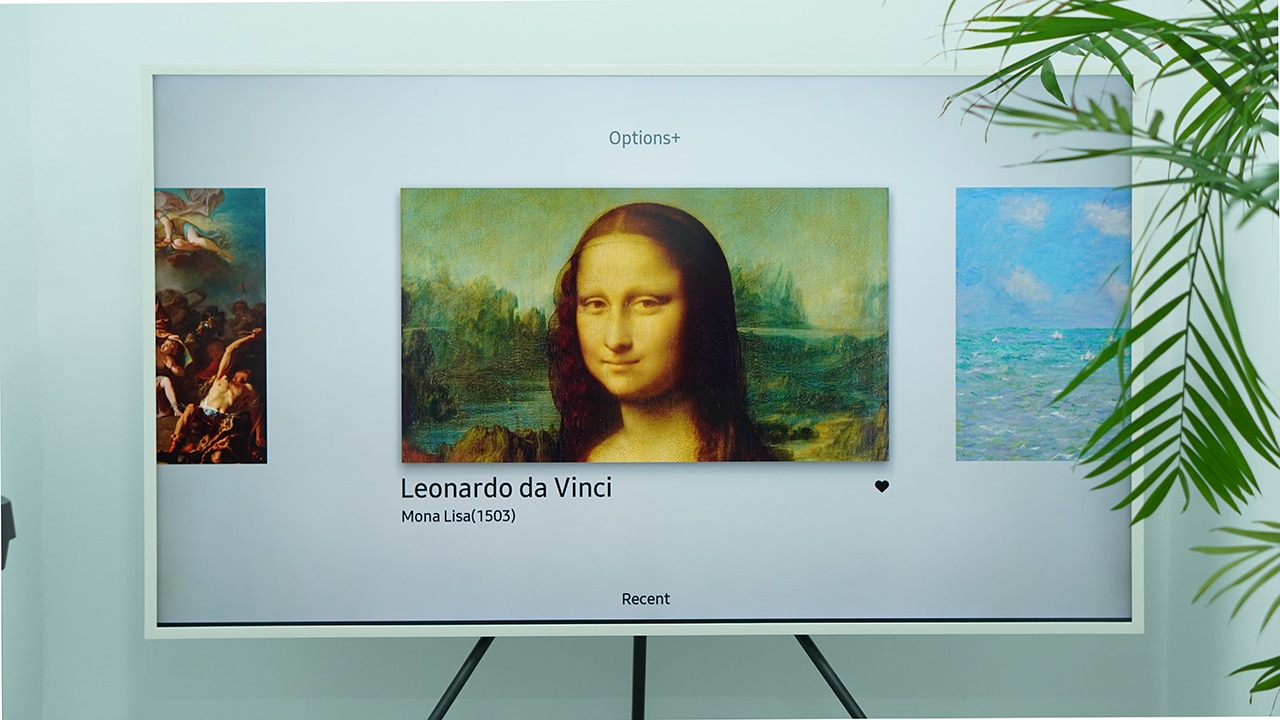
Now let’s talk about one of The Frame’s main features, Art Mode. When activated, The Frame acts like, well, a frame, and can showcase various artworks from Samsung’s Art Store or even personally uploaded photos.
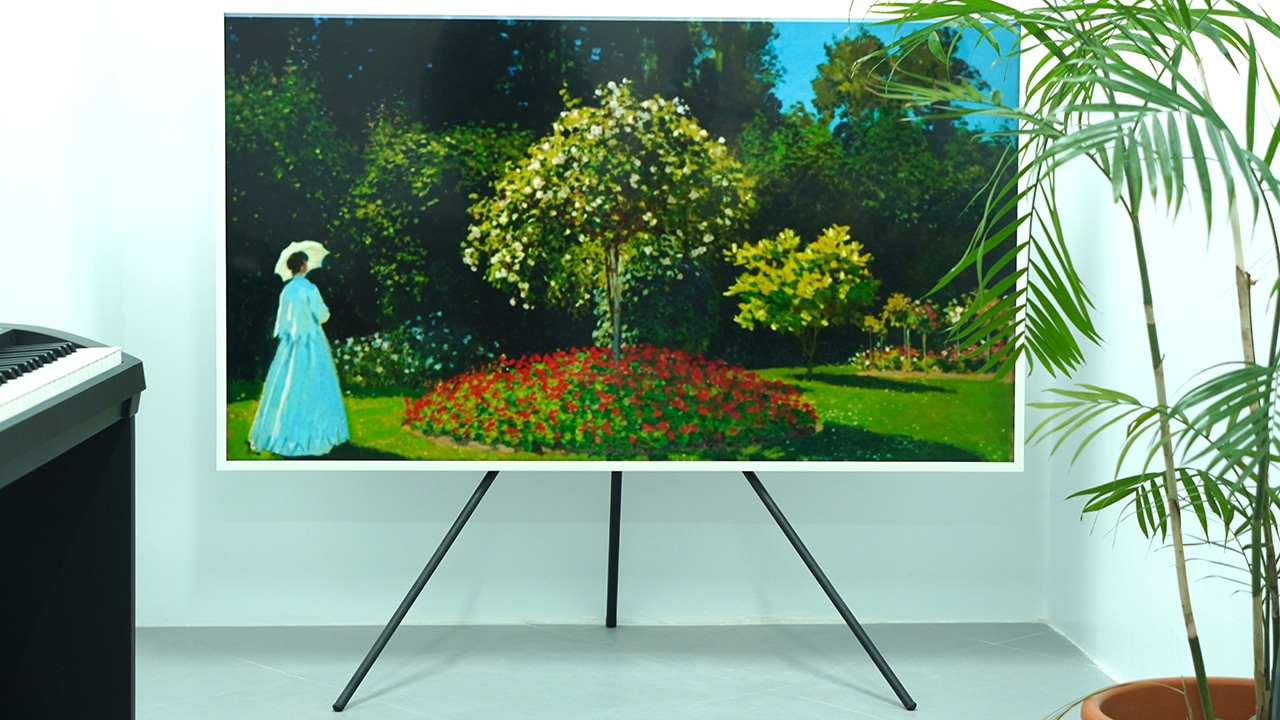
The Art Store boasts over 1,000 available and original art from all over the world including some from prominent museums like the Van Gogh Museum in Amsterdam or the Saatchi Gallery in London. You do only get a handful of free options and the rest can be accessed through a paid subscription.
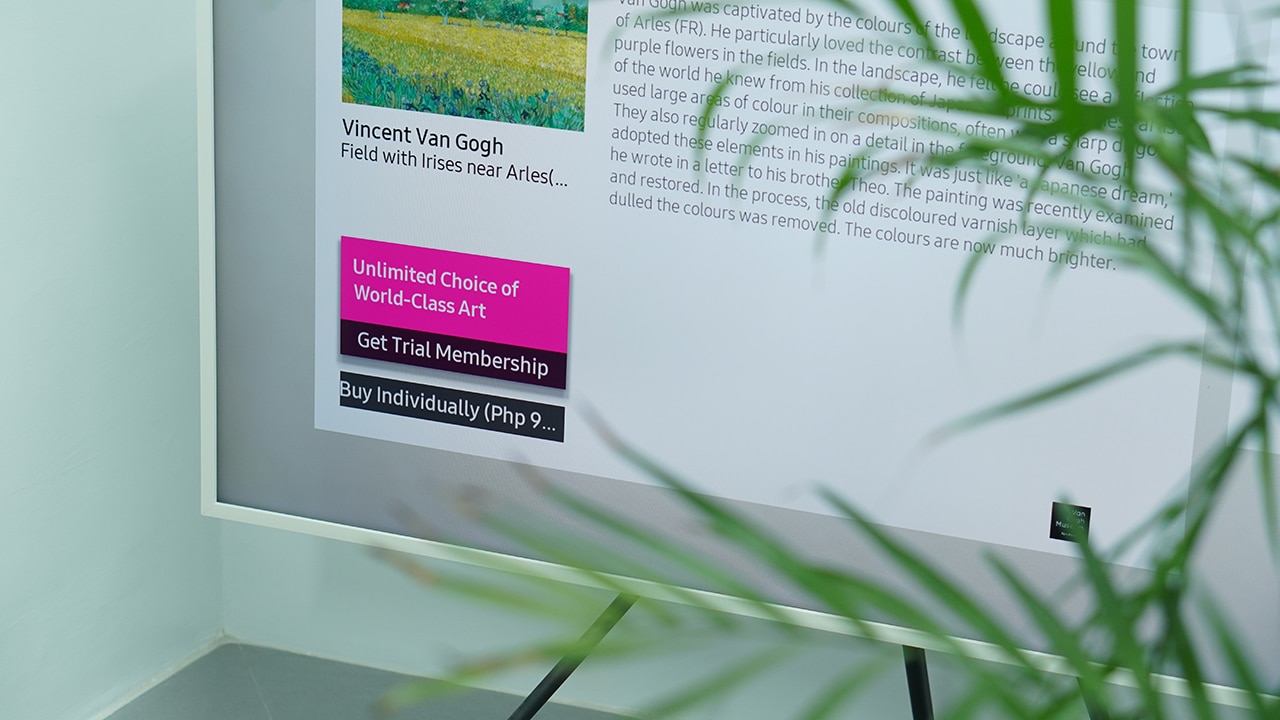
If you don’t feel like springing for a subscription, you can also easily upload and display your photos as well. This can be done either through a USB flash drive or even by uploading directly from your phone through the Samsung SmartThings app. It’s really convenient.

We loved how The Frame’s Art Mode was able to instantly brighten up any room. Putting in one of the art pieces made the device look like a simple unassuming frame holding up a prominent piece of artwork. It never fails to impress guests once they find out it’s actually a TV as well.
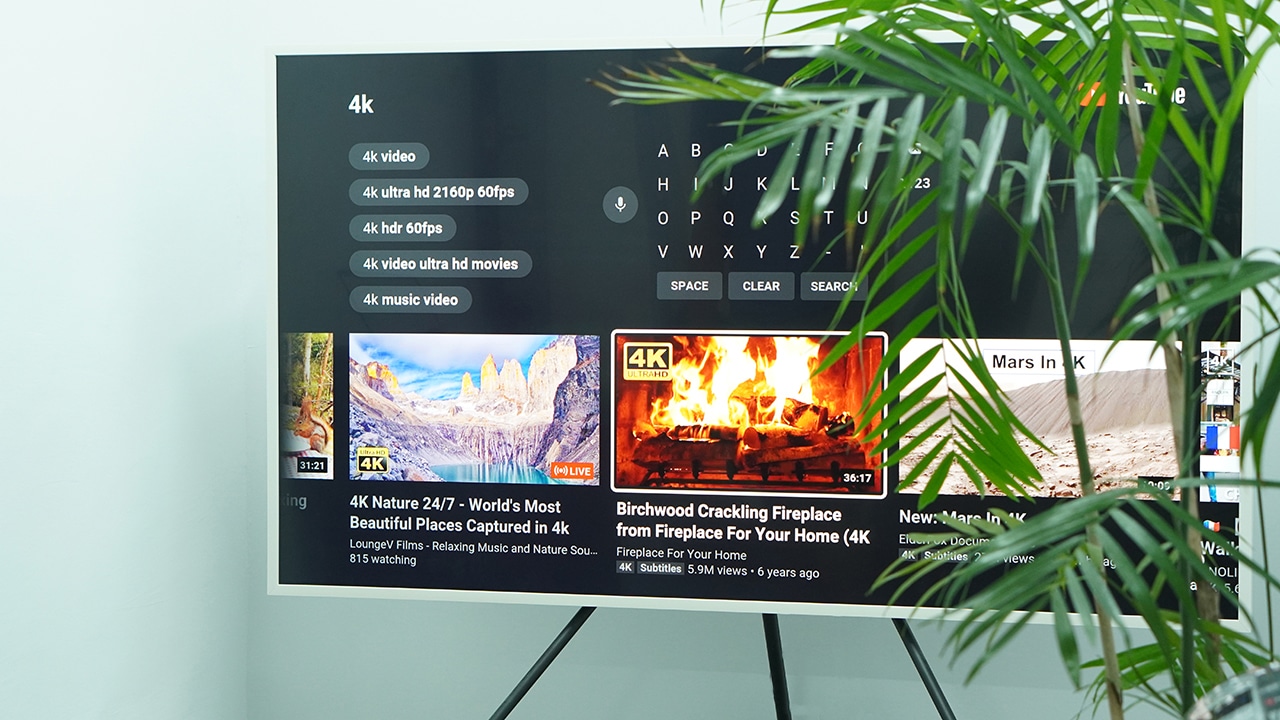
One of our favorite things to do is to play high-resolution videos of a roaring fireplace or aquarium and we feel instantly transported into a calmer environment.
Features

Being a Samsung TV, The Frame is also loaded with notable features that make using the device a lot easier. It’s equipped with a brightness sensor that intelligently senses ambient light and adjusts the TV’s brightness to an optimal level. There’s also a motion sensor that automatically switches The Frame to Art Mode when it senses the user leave the room or area.
These might sound like small features but they make everyday living with The Frame a totally different experience from just having a regular TV, no matter how large it may be.
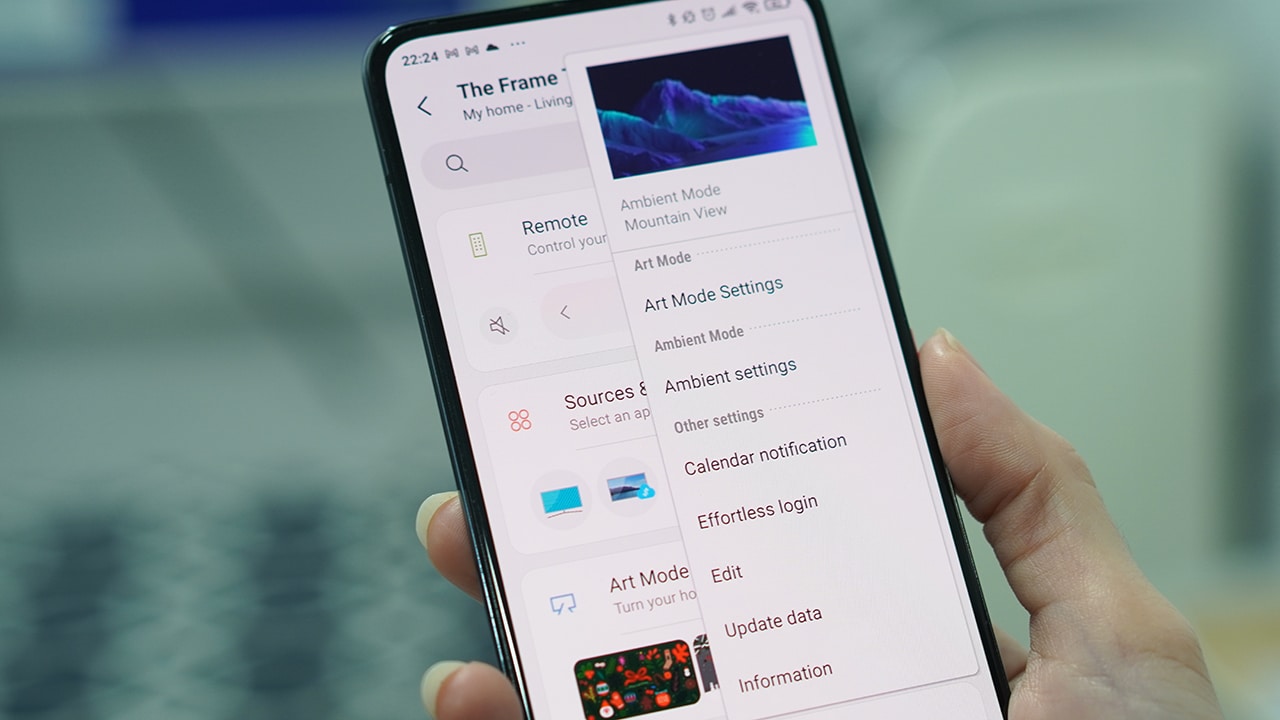
Let’s not forget that The Frame is also a Samsung smart TV meaning users have access to various smart features and apps as well.
Connecting it to the Samsung SmartThings app unlocks mobile mirroring for both Android and Apple devices, gesture-controlled remote controller, and integration with other SmartThings-enabled devices. It also comes with popular apps like Netflix and YouTube pre-installed.
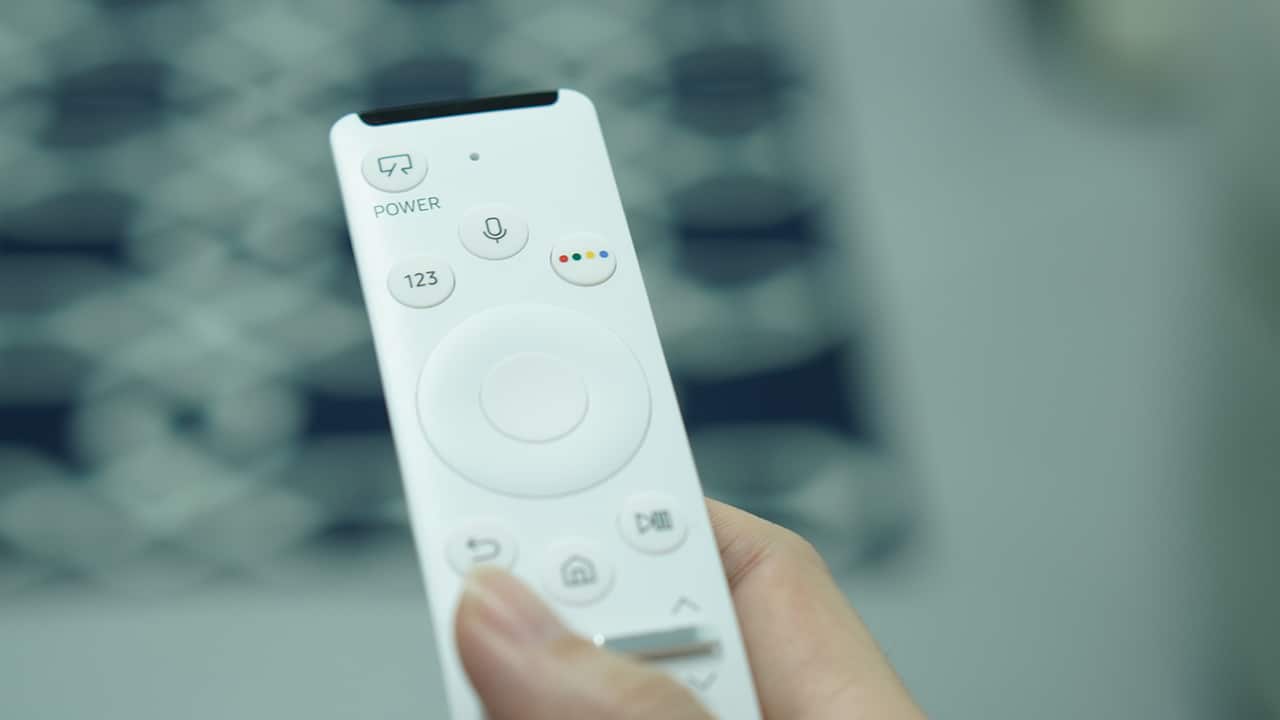
Additionally, The Frame also comes with Samsung’s smart assistant Bixby built-in. You can use voice commands to wake Bixby and ask it to perform actions such as searching for a new show or film or even controlling volume or changing channels.
Creature Feature
In our reviews, The Modern Creatures aims to find special features in a device that make it worth having — something that gives it a slight edge from the rest of the competition. And with Samsung’s The Frame, there’s no denying it would have to be its design.
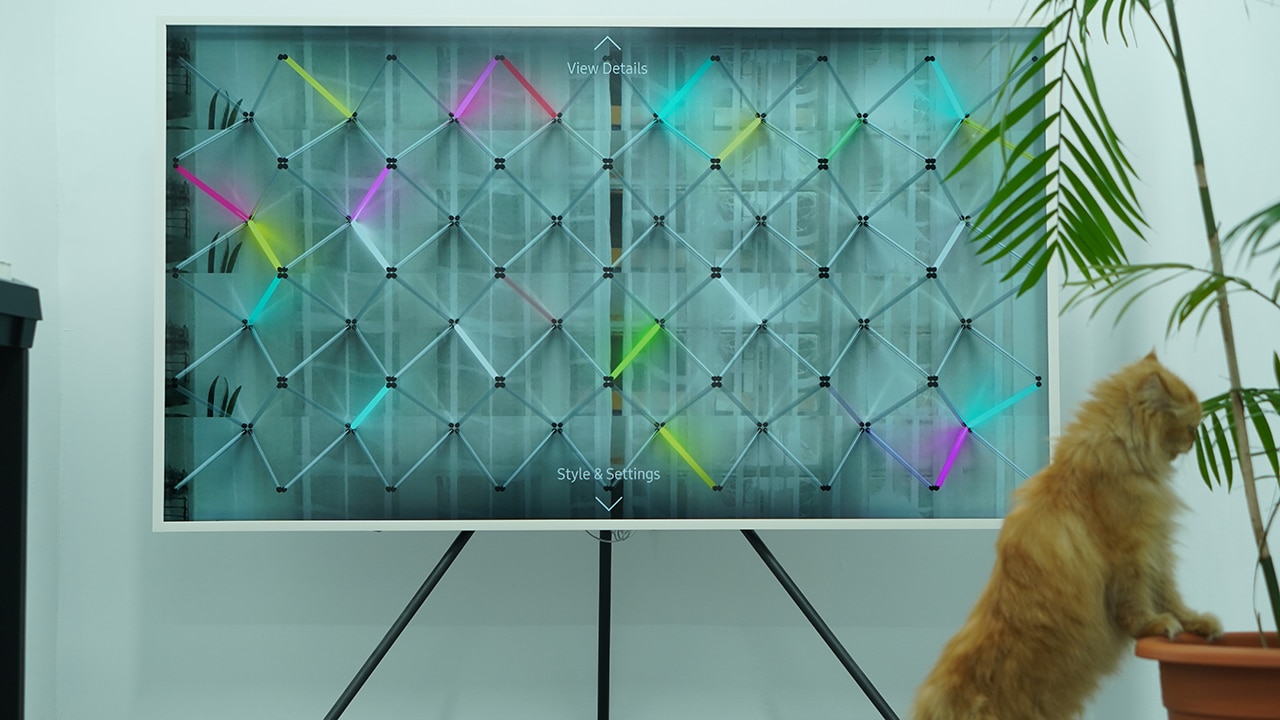
The market may be smaller for users who would want a TV created for interior design but for those who are looking for a gorgeous-looking TV, The Frame is a great choice. Interchangeable bezels mean you can change up the look of the room and still have The Frame easily blend in and the device’s Art Mode is undoubtedly a wonderful use for the device’s elegant build.
Final Thoughts
No one can deny that The Frame is a beautiful piece of technology and that would have to be its strong point. As a standalone TV, you could probably get similar features and performance at a lower price but, again, this device wasn’t created for the casual user.
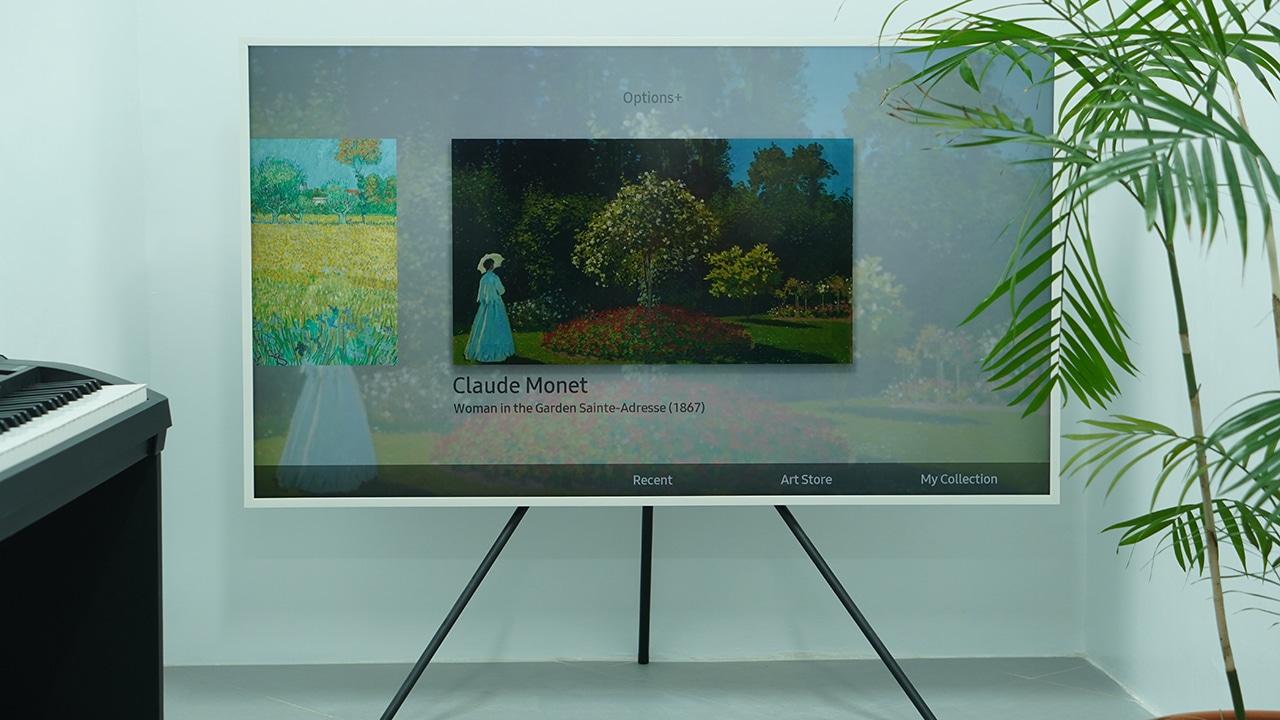
If you’re the kind of person who appreciates beautiful and functional things, you will appreciate The Frame. Samsung took the time to develop thoughtful solutions like the One Invisible Connection to help elevate and separate The Frame from all other TVs.
It offers beautiful picture quality thanks to the QLED panel technology and works well for watching shows, playing games, or even just mirroring your phone.
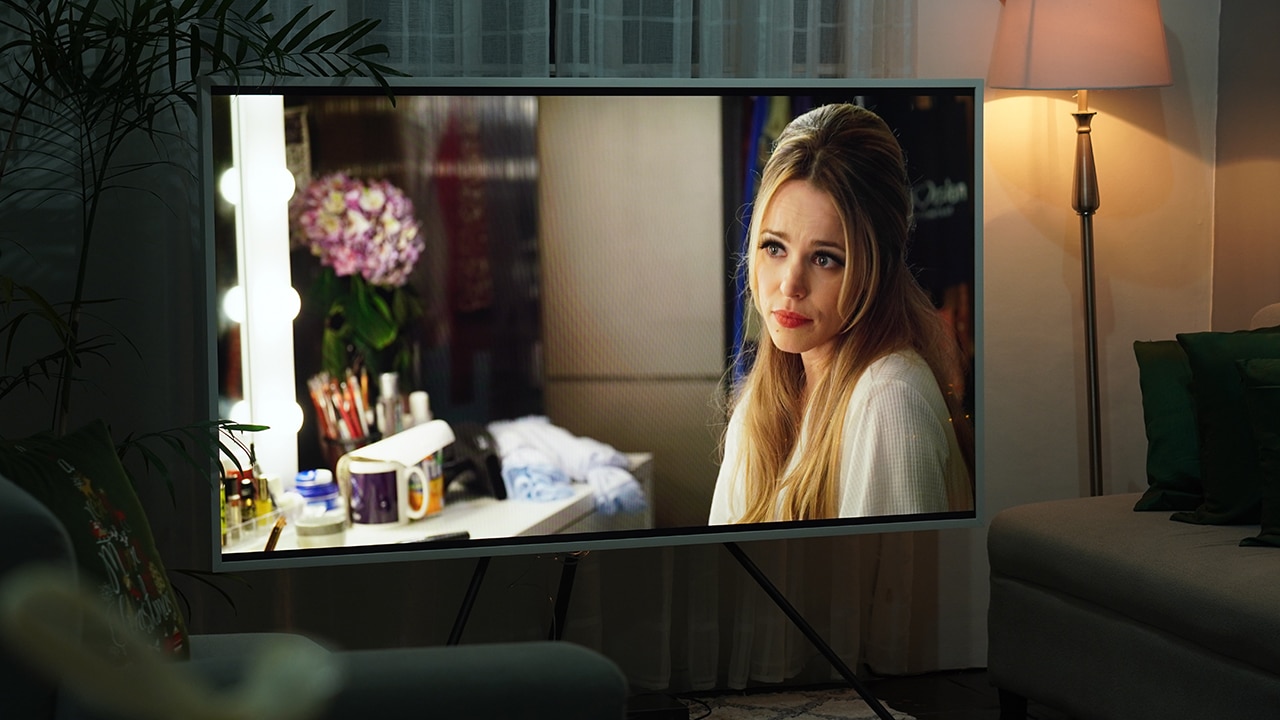
Audio is loud enough and has a clear, audible sound performance. Although, an external, dedicated speaker system is always an option. User interface is also pleasing and easy to navigate and the varied features allow for ease of use and a pleasant, overall entertainment experience.
Plus, we found it to be a really effective conversation starter.

